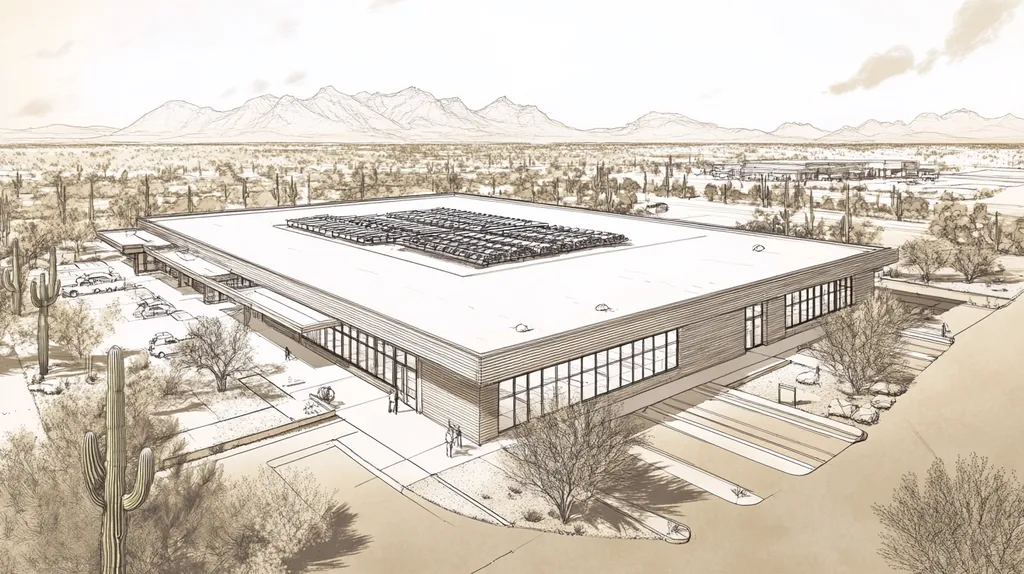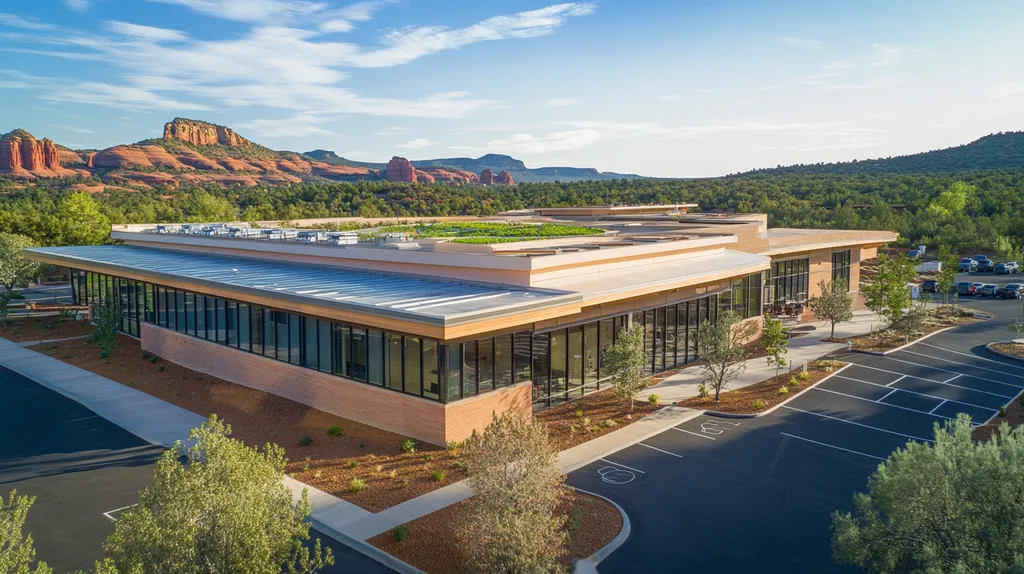U-value miscalculations in commercial roofing systems cost property owners millions in excess energy expenses annually, with studies showing up to 30% higher heating and cooling costs due to improper thermal assessments.
Current evaluation methods for commercial roof U-values rely on oversimplified calculations that fail to account for critical real-world factors like moisture accumulation, climate variations, and material aging.
This analysis examines why standard U-value assessment practices fall short, explores the systemic issues behind these shortcomings, and presents data-driven solutions to help facility managers make more informed roofing decisions.
SECTION 1: CURRENT PRACTICES
Understanding U-values is critical for making informed decisions about commercial roofing. With energy costs continuing to soar, even minor miscalculations can have substantial financial consequences. For example, a roof with inadequate insulation can lead to increased heating and cooling expenses, sometimes totaling thousands of dollars each year. This section will detail the current methods for calculating U-values, review applicable building codes and regulations, and introduce the measurement tools commonly used in the industry.
Standard U-value Calculation Methods
U-value measures a building material’s thermal transmittance, determining how efficiently it conducts heat. The most prevalent method for calculating U-values employs standardized testing based on ISO and ASTM protocols. These tests usually focus on fixed material thicknesses and types but often neglect real-world factors such as moisture and aging. Consequently, the derived U-values may mislead property owners, who base their decisions on incomplete data.
Moreover, the reliance on fixed properties overlooks the realities of roofing systems that experience temperature fluctuations and seasonal variations. Many commercial roofing systems available today do not accurately represent how various factors affect performance over time. Thus, evaluations may offer a deceptive sense of efficiency, misguiding facility managers.
Another widely adopted calculation approach is simulation software. While these tools can provide detailed analyses, their accuracy is directly dependent on the assumptions with which they are programmed. If these inputs are flawed, the resulting U-values will not effectively support energy management strategies.
In conclusion, property owners who depend solely on standard methods risk missing opportunities to enhance their roofing systems for real-world challenges.
Commonly Used Building Codes and Regulations
Building codes specify minimum energy efficiency standards that include U-values for roofing systems. For instance, the International Energy Conservation Code (IECC) outlines minimum U-value thresholds based on different climate zones. While these codes aim to lower energy consumption and environmental impact, they often oversimplify the complexities of modern building science.
Many codes rely on outdated data that fails to integrate the latest materials and technologies. This compliance rigidity can stifle innovation, keeping facility managers from utilizing more efficient systems that could provide superior performance.
A further limitation is that compliance with building codes tends to focus more on construction phases rather than on ongoing performance. This lack of foresight can result in ingrained inefficiencies that may significantly affect a building’s durability—especially in regions prone to extreme weather, where effective insulation is essential.
To genuinely improve industry standards, it is vital to reform building codes to embrace dynamic U-value assessments. Such a shift would align roofing systems with contemporary energy efficiency goals and enhance resilience against evolving climate challenges.
Industry-Accepted Measurement Tools
A variety of tools and technologies are utilized to measure U-values, but not all of them yield reliable results. Heat flow meters are popular for in-situ measurements; however, their accuracy can be significantly influenced by external conditions, leading to discrepancies between measured and actual performance.
Thermal imaging cameras can reveal heat loss and visually identify insulation shortfalls, yet they do not provide precise U-value calculations. Their efficacy relies heavily on the user’s expertise and the accurate interpretation of the data. Without consistent guidelines for interpretation, variations in results can occur.
Moreover, many measurement tools neglect to account for the cumulative effects of roof aging and environmental factors, limiting their overall usefulness. Commercial property managers may receive only a snapshot of thermal performance instead of a comprehensive overview over time.
The commercial roofing sector urgently requires advanced, holistic measurement tools. A move toward devices that offer contextual data could facilitate more accurate evaluations and lead to more effective roofing solutions for property owners.
SECTION 2: SYSTEMIC ISSUES
The evaluation of U-values in commercial roofing systems carries significant implications for both energy efficiency and structural integrity. Unfortunately, many property owners may not fully grasp that existing evaluation methods frequently overlook critical components. These oversights can lead to soaring energy costs and the risk of costly structural repairs. Addressing these systemic issues is essential for making informed decisions that enhance the overall performance and longevity of roofing systems.
Overlooking Climate-Specific Factors
A major flaw in current U-value evaluations is their reliance on broad standards that fail to consider local climate conditions. For instance, roofing materials deemed effective in mild climates may struggle to perform in regions experiencing extreme temperatures or high humidity levels.
Such climatic variations directly influence insulation effectiveness and energy consumption. In areas with significant cooling needs, roofs that do not meet appropriate U-value standards may contribute to excessive energy usage and inflated utility bills.
Moreover, overlooking local weather patterns can lead to misguided investments in roofing solutions that ultimately fall short of regional requirements. It’s vital that evaluations take these climate-specific factors into account to ensure optimal roofing performance.
By integrating local climate data into U-value assessments, property owners can enhance energy efficiency and maximize their investments in roofing systems.
Ignoring Condensation and Water Effects
Condensation and moisture control are critical aspects often disregarded in U-value assessments. Many traditional evaluation methods focus almost exclusively on heat transfer, neglecting how water accumulation can threaten roofing integrity.
In colder climates, for example, condensation can trigger mold growth and structural damage. These issues can lead to health risks and costly repairs that overshadow any energy savings achieved through a favorable U-value.
To achieve a comprehensive understanding of roofing performance, it’s essential to implement moisture management strategies alongside U-value assessments. This dual approach not only boosts energy efficiency but also protects against potential water-related damage.
Incorporating the relationship between condensation and U-values enables property owners to design roofing systems that are energy efficient, durable, and capable of withstanding environmental challenges.
Neglecting Surface Heat Transfers
Surface heat transfers represent another vital aspect that current U-value evaluations often overlook. A roofing system’s performance is affected not just by its insulation, but also by the way it interacts with external heat sources, such as sunlight.
For instance, dark-colored roofs tend to absorb significant amounts of heat, which can drive up cooling costs. However, existing evaluation methods frequently fail to adequately account for these surface heat transfer dynamics.
Assessing the impacts of surface heat can guide the selection of roofing materials and colors that optimize energy efficiency. By choosing materials that better reflect or dissipate solar heat, facility managers can make more strategic decisions regarding their roofing systems.
By comprehensively considering surface heat transfers in conjunction with U-values, property owners can improve energy efficiency, lower operational costs, and enhance occupant comfort.
SECTION 3: MISSED OPPORTUNITIES
The existing methods for evaluating U-values in commercial roofing systems often miss critical advancements that could greatly improve energy efficiency. As energy costs rise and sustainability becomes increasingly important, property owners and facility managers risk falling behind by not exploiting the latest insulation materials and more accurate calculation techniques. Ignoring these advancements can mean lost savings and a greater environmental impact. This section highlights the key gaps in current practices and the untapped opportunities that exist in the industry.
Potential of Advanced Insulation Materials
Advanced insulation materials represent a major opportunity that remains largely untapped in many commercial roofing systems. Innovations such as reflective coatings and aerogel insulation can significantly enhance thermal performance, yet they are often overlooked in favor of traditional options.
For example, vacuum-insulated panels offer superior thermal resistance in a thinner profile, saving both space and costs. Traditional roofing evaluations frequently fail to incorporate these advancements, preventing better energy efficiency from being realized.
By adopting these modern materials, property managers can significantly lower the U-values of their roofs, which translates to reduced heating and cooling expenses. A thorough understanding of these advanced products can facilitate strategic decision-making in roofing projects.
Additionally, manufacturers are increasingly creating eco-friendly insulation that meets performance requirements while contributing to sustainability initiatives. Implementing these materials can enhance a company’s reputation and positively impact overall energy consumption.
Benefits of Component-Based U-Factor Method
The component-based U-factor method provides a more detailed approach to assessing energy efficiency in roofing systems. Instead of merely considering an overall U-value, this method evaluates each material and layer within a roofing assembly.
This granular analysis allows facility managers to identify specific weaknesses in thermal performance. For instance, if a membrane has excellent insulation properties but is paired with inferior underlayment, the overall U-value will suffer as a result.
With this method, property managers can make informed choices about which components to replace or improve. This strategy could potentially reduce energy costs by 20% or more in specific cases, offering a substantial return on investment.
The component-based approach also simplifies U-value calculations. This transparency helps property owners feel more confident in their roofing decisions, enabling tailored solutions that directly address their requirements.
Energy Efficiency Gaps in Current Practices
Current industry practices frequently overlook valuable data, resulting in energy efficiency gaps that could be addressed through new strategies. Many assessments emphasize initial costs over long-term savings, particularly when selecting roofing materials.
By favoring outdated roofing solutions, property owners not only incur higher heating and cooling expenses but also extend the payback period on their investments. This short-term focus can lead to greater long-term costs in utilities and maintenance.
Moreover, a lack of collaboration among key stakeholders—such as architects, contractors, and building owners—hampers the adoption of innovative roofing solutions. These silos limit communication and prevent the exchange of best practices that could enhance overall energy performance.
Identifying these gaps is crucial for the industry’s advancement. Property owners have the opportunity to promote change within their organizations and across the industry, ensuring that roofing systems are optimized for both energy savings and environmental sustainability.
SECTION 4: ROOT CAUSES
Understanding U-values in commercial roofing systems is crucial for property owners and facility managers. Current evaluation methods often oversimplify the thermal performance of roofs, leading to significant discrepancies between theoretical assessments and real-world outcomes. As a result, property owners face increased energy costs and diminished occupant comfort. To rectify these issues, it’s imperative to explore the root causes behind inadequate U-value assessments.
Simplifications in Modeling Thermal Performance
The methods used to calculate U-values often rely on overly simplified models that fail to reflect the complexities of actual usage. Many calculations are based on ideal conditions, ignoring critical factors such as air infiltration and moisture management systems. This disconnect means that the estimated energy efficiency of a roofing system may not accurately portray its on-site performance.
For example, a roof might receive an acceptable U-value rating from lab tests. However, once installed, real-world factors like installation errors or improper sealing can significantly reduce its effectiveness. This misalignment can lead to higher heating and cooling expenses, ultimately affecting budget forecasts.
Furthermore, many software tools for U-value calculations assume uniform properties across materials, which can mislead facility managers in making energy-efficient decisions. A more nuanced approach is essential for more precise assessments. Advanced modeling techniques should be prioritized to reflect the realities of thermal performance.
Lack of Consideration for Real-World Conditions
Ignoring real-world conditions significantly worsens the limitations of current U-value evaluations. Various factors—including local climate, building orientation, and shading from nearby structures—play critical roles in a roof’s thermal performance. A lack of attention to these elements can lead to poor decision-making regarding roofing solutions.
For instance, a roof designed for moderate climates may underperform in regions with high temperatures or humidity. Assumptions made during evaluations often fall short, resulting in unexpected energy use, where building owners may not achieve anticipated savings.
Additionally, many property owners mistakenly believe that a single evaluation suffices for the roof’s lifespan. However, ongoing weather changes and normal wear can alter a roof’s characteristics. Continuous performance monitoring and assessment are essential to ensure roofs remain energy-efficient over time.
Inadequate Training and Workmanship
Insufficient training for roofing professionals is a key factor contributing to the inaccuracies in U-value assessments. Many contractors lack a thorough understanding of the proper installation of insulation and other integral components. As a result, issues typically go unnoticed, undermining the calculated thermal efficiency.
For example, improper sealing at joints can permit hot or cold air to infiltrate, drastically impacting energy use. These common oversights can elevate energy consumption and compromise overall building performance.
Moreover, reliance on outdated training methods further perpetuates these issues. As roofing techniques evolve, some professionals remain unaware of best practices. Investing in updated training programs will not only enhance workmanship but also improve U-value performance.
Implementing rigorous training initiatives focused on the complexities of thermal performance will help alleviate common deficiencies, enabling property owners to make better-informed decisions about their roofing systems.
DATA DRIVEN EVIDENCE
Miscalculations of U-values can result in substantial energy inefficiencies within commercial roofing systems. Studies indicate that improper U-value assessments can account for up to 30% of energy costs. As energy prices surge, the need for precise U-value calculations is more critical than ever. This section investigates concrete case studies, energy consumption data from field studies, and compliance challenges related to existing building codes, illustrating the significant implications within the industry.
Case Studies on U-Value Miscalculations
Several case studies underscore the dire consequences of U-value miscalculations in commercial roofing projects. A notable example involved a large retail facility that underestimated its U-value by 20%. This oversight led to an annual energy cost increase of $50,000, while tenants reported discomfort, resulting in higher turnover rates and additional management challenges.
In another case, an office building that strayed from accurate U-value specifications faced severe energy losses. This discrepancy led to increased demands on the HVAC systems, ultimately reducing their lifespan and resulting in expensive repairs. These instances clearly highlight the financial and operational impacts linked to U-value inaccuracies.
Such case studies reveal a systemic issue in the industry: reliance on outdated evaluation methods hampers building performance. Property owners must view these documented incidents as urgent calls to action. Accurate U-value assessments are essential not just for compliance but for creating sustainable, cost-effective buildings.
Energy Consumption Data from Field Studies
Field studies yield compelling evidence that accurate U-values can profoundly influence energy consumption. A detailed evaluation of various commercial roofs demonstrated that properly calculated U-values resulted in energy savings of around 25% in some facilities. Conversely, buildings with inflated U-values faced inflated operational costs and energy waste.
One research initiative monitored energy consumption across different commercial roofing systems. Results revealed that systems with optimized U-values not only reduced energy consumption but also contributed to lower greenhouse gas emissions. This data showcases the wider impact of U-value assessments, tying energy efficiency to climate action initiatives.
The findings affirm that energy efficiency is not solely a financial issue but also an environmental responsibility. Validating U-values through field data empowers property owners to make informed decisions that align with economic and ecological objectives. The industry must prioritize real-world evaluations to prepare buildings for a sustainable future.
Compliance Issues with Building Codes
Compliance with building codes is heavily reliant on accurate U-value evaluations. Many jurisdictions impose explicit energy efficiency requirements based on U-values, making adherence essential for property owners. Non-compliance can result in severe penalties, including fines and costly retrofits.
Recent analyses show that over 30% of commercial buildings assessed failed to meet local energy codes due to U-value discrepancies. This non-compliance not only jeopardizes financial performance but can also damage reputations among stakeholders. Property managers face mounting pressures to maintain compliance while navigating U-value calculation complexities.
The industry must push for updated evaluation approaches that enhance compliance and promote energy efficiency. As building codes evolve, a proactive commitment to U-value accuracy can help prevent regulatory pitfalls. Ignoring compliance issues risks undermining a building’s operational success and financial sustainability.
SECTION 6: ALTERNATIVE SOLUTIONS
Enhancing the performance of commercial roofs is a pressing concern. As energy prices escalate and sustainability remains a priority, sticking to outdated U-value evaluation methods can impede advancements. Building owners and facility managers risk ballooning energy bills and potential structural failures if proper insulation is not factored in. This section discusses alternative solutions that can lead to significant improvements in roofing performance.
Implementing the U-Factor Alternative Method
The U-Factor Alternative Method revolutionizes how roof systems are evaluated. Rather than focusing solely on individual components, this approach assesses the overall thermal performance of the entire roofing assembly. By accounting for factors such as air leakage and moisture management, property owners gain a clearer understanding of their roofs’ efficiency.
Implementing this method can yield substantial cost savings. Facilities that adopt it may see heating and cooling demands decrease by up to 20%, highlighting the importance of reevaluating how U-values are calculated.
Additionally, the U-Factor Method offers greater flexibility in material choices. This adaptability allows property owners to find a balance between performance needs and budget constraints more effectively.
By embracing this approach, stakeholders not only enhance their insights into energy efficiency but also align their practices with broader sustainability goals.
Incorporating Rainwater Cooling Corrections
Rainwater cooling corrections are an innovative way to refine U-value assessments. Many traditional methods fail to incorporate the cooling effects that rainwater can have, which can drastically affect roof temperatures and energy consumption. Integrating this factor allows for a more accurate portrayal of a roof’s true performance.
Research indicates that roofs with effective drainage systems can see surface temperatures drop by as much as 15%. This reduction can lead to less reliance on air conditioning during peak summer months, ultimately decreasing energy costs.
By including rainwater cooling corrections in U-value evaluations, property managers gain a more dynamic understanding of thermal performance, prompting them to consider the broader implications of roof design and environmental interactions.
This adjustment helps in creating more sustainable and cost-effective roofing solutions, aligning with the industry’s shift towards eco-friendly practices.
Using Advanced U-Value Calculation Software
Advanced U-value calculation software provides a state-of-the-art solution to the limitations of conventional evaluation methods. These tools empower property owners and facility managers to analyze various roofing configurations and materials in real time, enabling tailored solutions that meet specific building and energy needs.
With heightened precision in calculations, these tools significantly reduce the risk of error. For instance, they can simulate how different weather conditions impact roof performance, leading to more proactive management strategies.
Moreover, advanced software often incorporates the latest data regarding material properties and environmental impacts, essential for informed decision-making. This capability aids in identifying the most energy-efficient roofing options, providing a roadmap for future upgrades.
Embracing this technology signifies a vital shift toward greater accountability in roofing performance, making the industry more transparent and informed in its approach to U-values.
Moving Forward
The commercial roofing industry stands at a critical junction, where outdated U-value evaluation methods cost property owners an estimated $3.6 billion annually in excess energy expenses.
Current calculation practices consistently overlook crucial factors like moisture accumulation, climate variations, and material aging, leading to significant performance gaps between predicted and actual thermal efficiency.
The adoption of component-based U-factor methods, advanced calculation software, and real-world performance monitoring represents an essential shift toward more accurate assessments.
Without immediate industry-wide changes to U-value evaluation protocols, commercial properties will continue to face escalating energy costs, reduced building performance, and potential regulatory non-compliance.
The path forward requires a fundamental reimagining of how thermal performance is measured, calculated, and verified in commercial roofing systems.
FREQUENTLY ASKED QUESTIONS
Q. What are U-values in commercial roofs?
A. U-values quantify the thermal transmittance of roofing materials, indicating energy efficiency. A lower U-value signifies better insulation, which can lead to reduced energy costs and improved occupant comfort.
Q. How do current methods for U-values affect commercial roofs?
A. Current methods may overlook critical factors affecting heat conductivity, leading to inflated energy costs. This can mislead property owners regarding their roof’s real efficiency and energy expenditures.
Q. Why is climate a factor in evaluating industrial roof U-values?
A. Climate-specific factors heavily influence insulation effectiveness and energy consumption. Ignoring local weather conditions can lead to poor performance, resulting in excessive energy use and costs.
Q. How do U-value inaccuracies impact property owners?
A. Inaccurate U-values can lead to excessive energy expenses and discomfort for occupants. Miscalculations often result in increased reliance on HVAC systems and higher maintenance costs.
Q. What are advanced insulation materials for commercial roofs?
A. Advanced insulation materials like reflective coatings and aerogel enhance thermal performance. Utilizing these innovations can significantly improve energy efficiency and lower overall roofing expenses.
Q. What is the U-Factor Alternative Method?
A. The U-Factor Alternative Method evaluates the overall thermal performance of a roofing assembly. This approach improves accuracy by considering factors like air leakage and moisture management.
Q. How can advanced software improve U-value calculations?
A. Advanced software provides precise calculations for U-values, simulating different conditions and materials. This technology helps property owners make informed decisions based on real-time data regarding energy efficiency.










